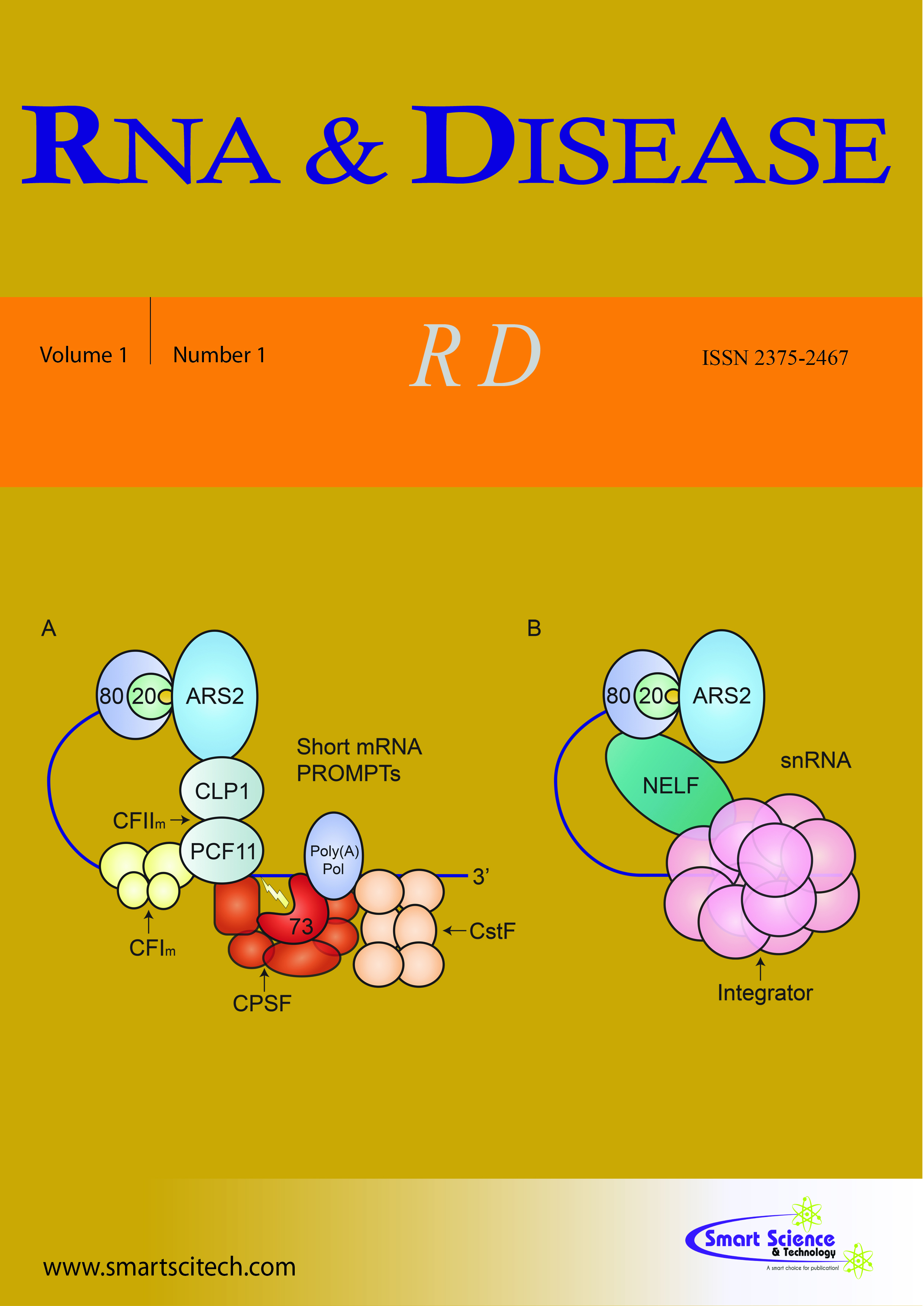miR-126 and miR-223 as biomarkers of vascular damage in the course of Chronic Kidney Disease
DOI: 10.14800/rd.347
Abstract
Development of disease is often due to deregulation of gene expression. The gene program is controlled at the post-transcriptional level by the action of small non-coding RNAs known as microRNAs (miRNAs), short, single-stranded molecules that control mRNA stability or translational repression via base pairing with regions in the 3' untranslated region of their target mRNAs. Over the last decade, considerable progress has been made to elucidate the roles of miRNAs in vascular pathogenesis and develop the use of miRNAs as innovative biomarkers in diagnostics, and as groundbreaking drugs in pharmacological treatments. It has been recently shown that several miRNAs are implicated in the course of chronic kidney disease (CKD) and are associated with vessel damage, such as vascular calcifications and atherosclerosis. The inflammatory miR-223 is increased in vitro in vascular smooth muscle cells subjected to uremic toxins and is also increased in vivo in more advanced stages of CKD. The endothelial-specific miR-126 is involved in vascular remodeling in response to laminar shear stress in HUVEC cells. Finally, miR-126 levels have been found to be deregulated in murine and human serum in the course of experimental CKD and in human diabetic patients. In conclusion, these miRNAs could play a role in CKD vascular remodeling and may therefore represent useful targets to prevent or treat complications of CKD.











